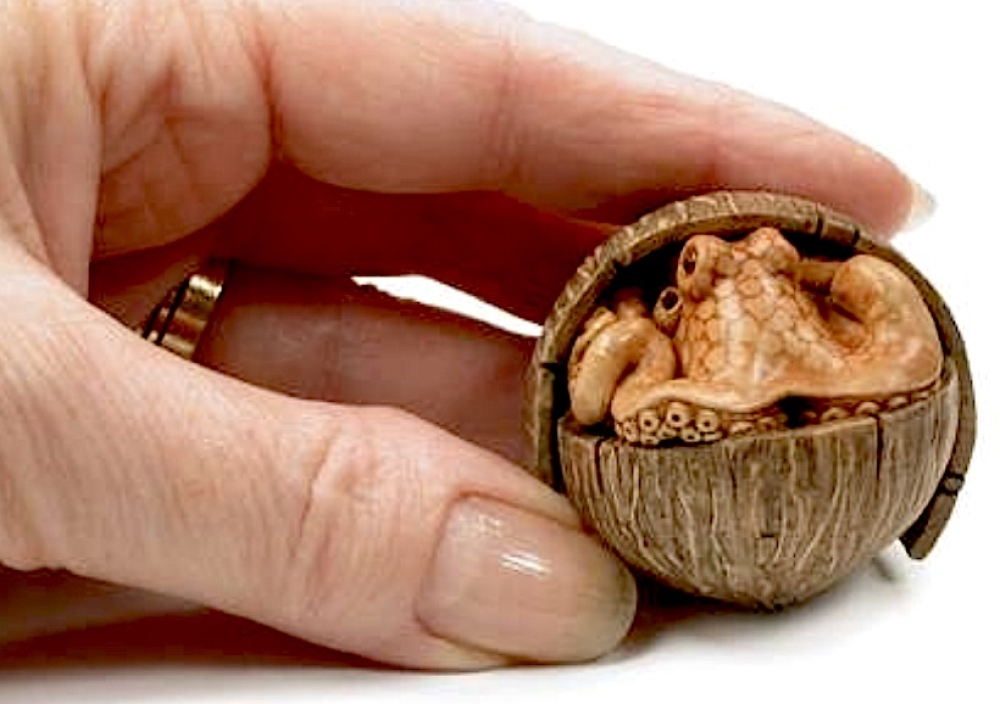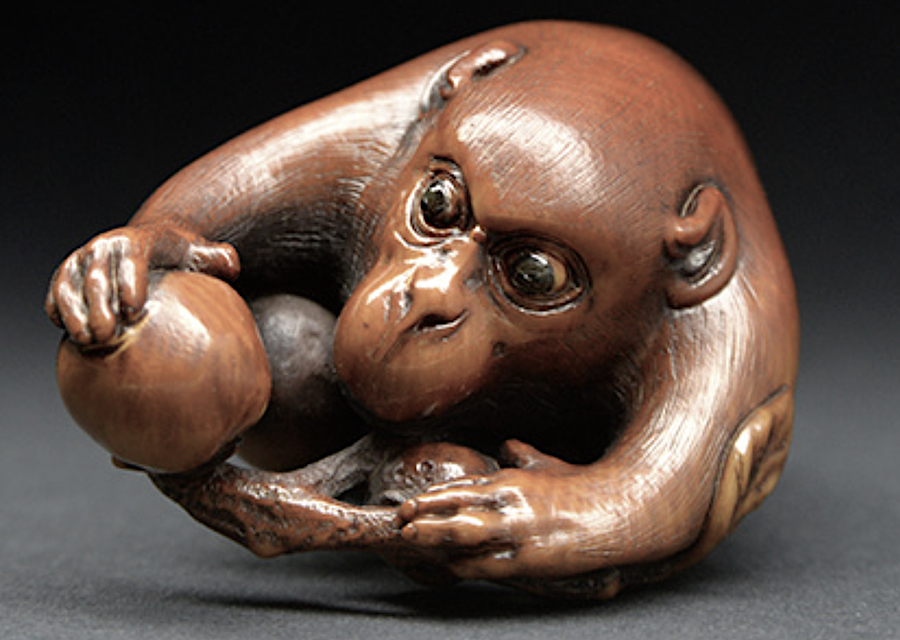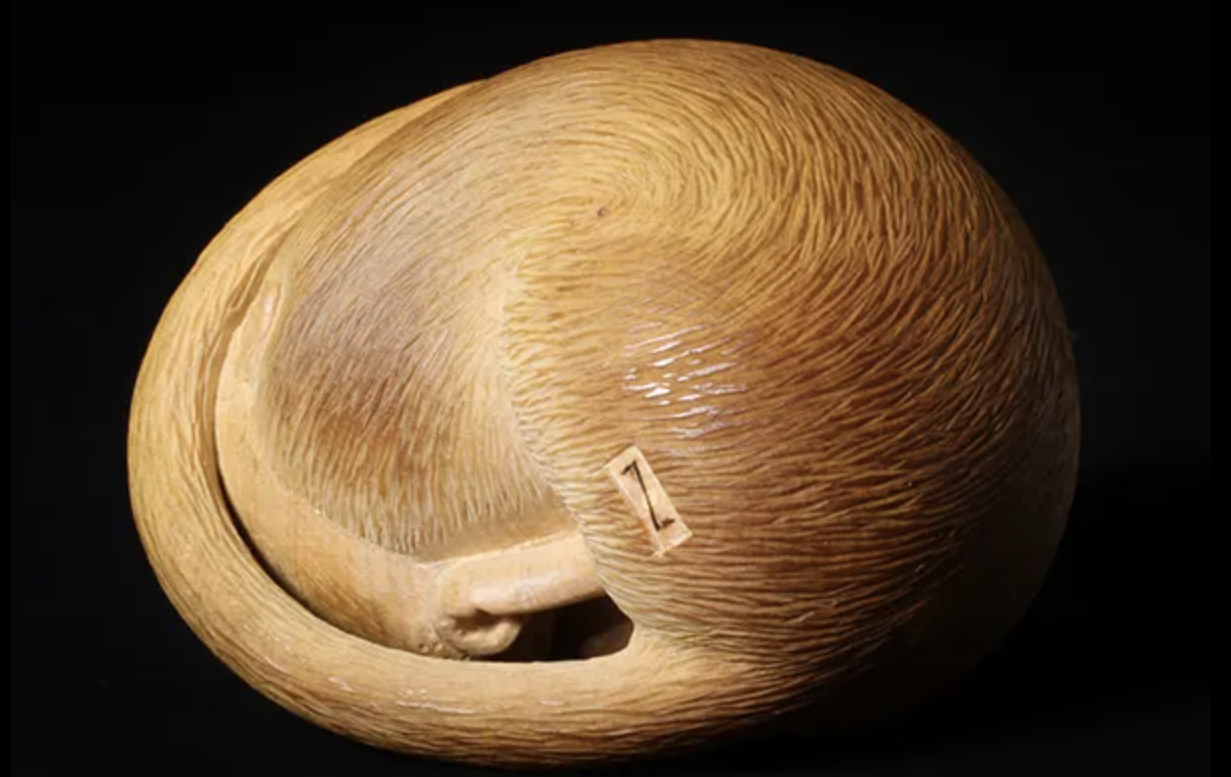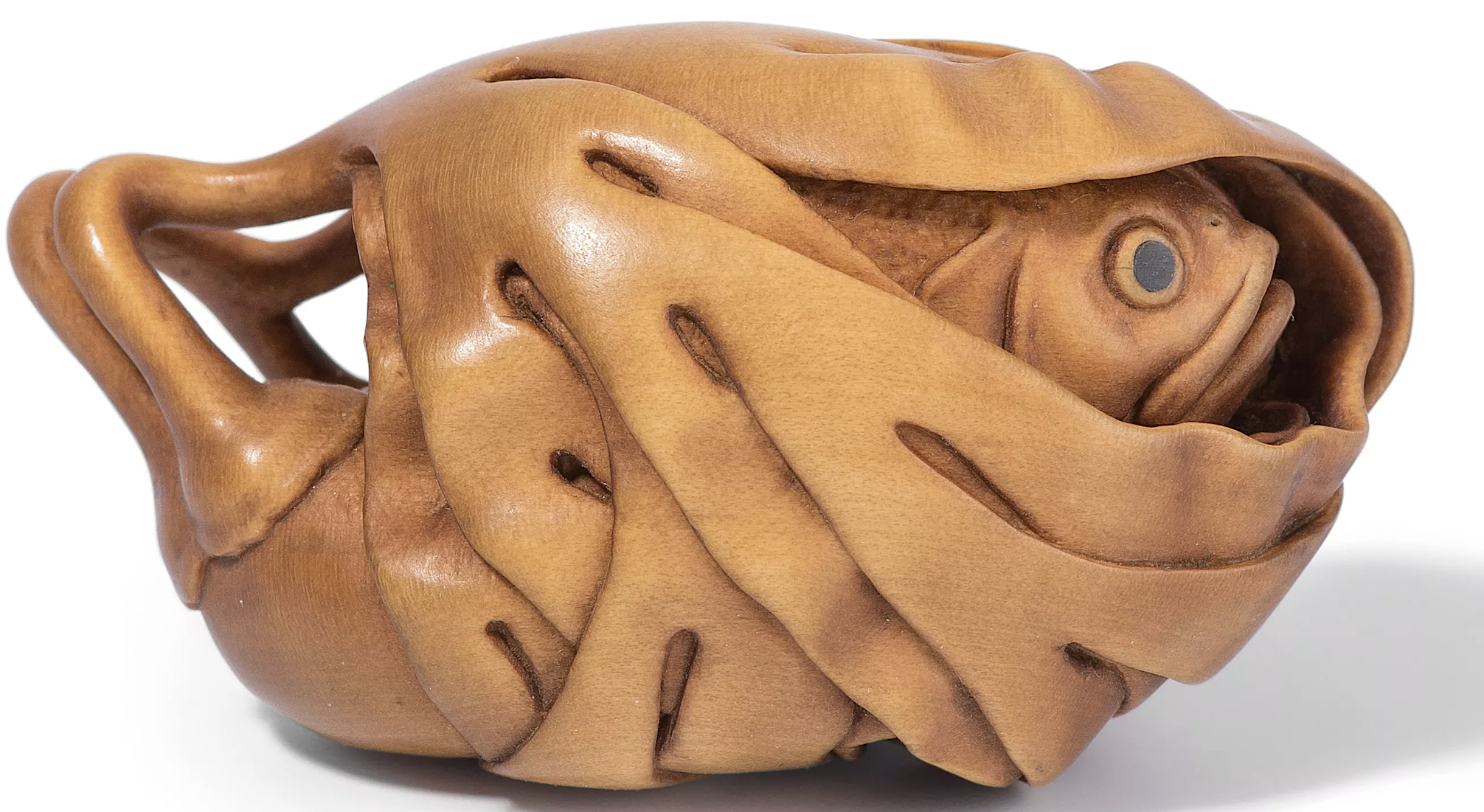Netsuke - Carving Small
16.11.24

Netsuke [pron. néts-kay] is a late 19th century, Japanese word for the toggle on a kimono cord, used to secure small personal items such as money pouches.
Netsuke have been around since the Edo period (1603-1868), carved from wood, ivory or other materials, and often highly ornamental, humorous, intriguing and charming.
Like this "octopus in a Walnut Shell (carver unknown):
I have never carved netsuke, but I do know there the tradition has certain parameters that must be respected for a carving to be called 'netsuke', rather than a 'small carvings'.
There are many astonishing antique one netsuke to be found online, but did you know there was a thriving practice of netsuke carving still going on today?
Do a search online for contemporary netsuke carvers, but let me also recommend a few, starting with one who trained initially as a jeweller at the Royal College of Art in London… the astonishing:
Susan Wraight
https://artdirectory.jpf.org.au/artists/susan-wraight/

This 'Possums Nest' in boxwood, height 4.5cm is one of Susan Wraight's best known pieces.
Wood
The rule is: The smaller the carving, the denser (tighter grained) must be the wood.
Today, carvers use European boxwood, lignum and holly for the basic carving. inlaid sometimes with other materials such as metal or shell. Tagua nut (also known as vegetable ivory) is a substitute for ivory, in which a lot of the originals were made.
Remember too that you only need a small amount of material so, although these sorts of wood may seem expensive, they aren't when considered as part of your overall netsuke project.
Sergey Osipov
https://osipovnetsuke.com/index.html

This is Sergey's 'A Right Choice', carved in mammoth tusk.
Tools
Netsuke carvers use what are called ‘microtools' to cope with the scale; essentially the blades are a lot shorter than regular tools and are held in a pencil like grip. They may well be holding their netsuke carving in the other hand.
With very dense woods, scrapers, perhaps made from old rifflers or dental tools, will remove wood effectively and leave a polished finish before any fine sandpaper.
And of course, modern carvers make full use of high-speed flexible drive shafts and small cutter and burrs
Niky Senater
https://nikysenater.com/category/netsuke/

'Sleeping Dormouse' by Niky Slater. Boxwood
Finishing
Remember that netsuke are objects to be handled, so they must have a smooth, tactile quality. This will mean being selective about what tool marks you leave. or not.

'Fish in Seaweed' by Susan Wraight
Lastly:
Check out the International Netsuke Society
https://www.netsuke.org/contemporaryartists
